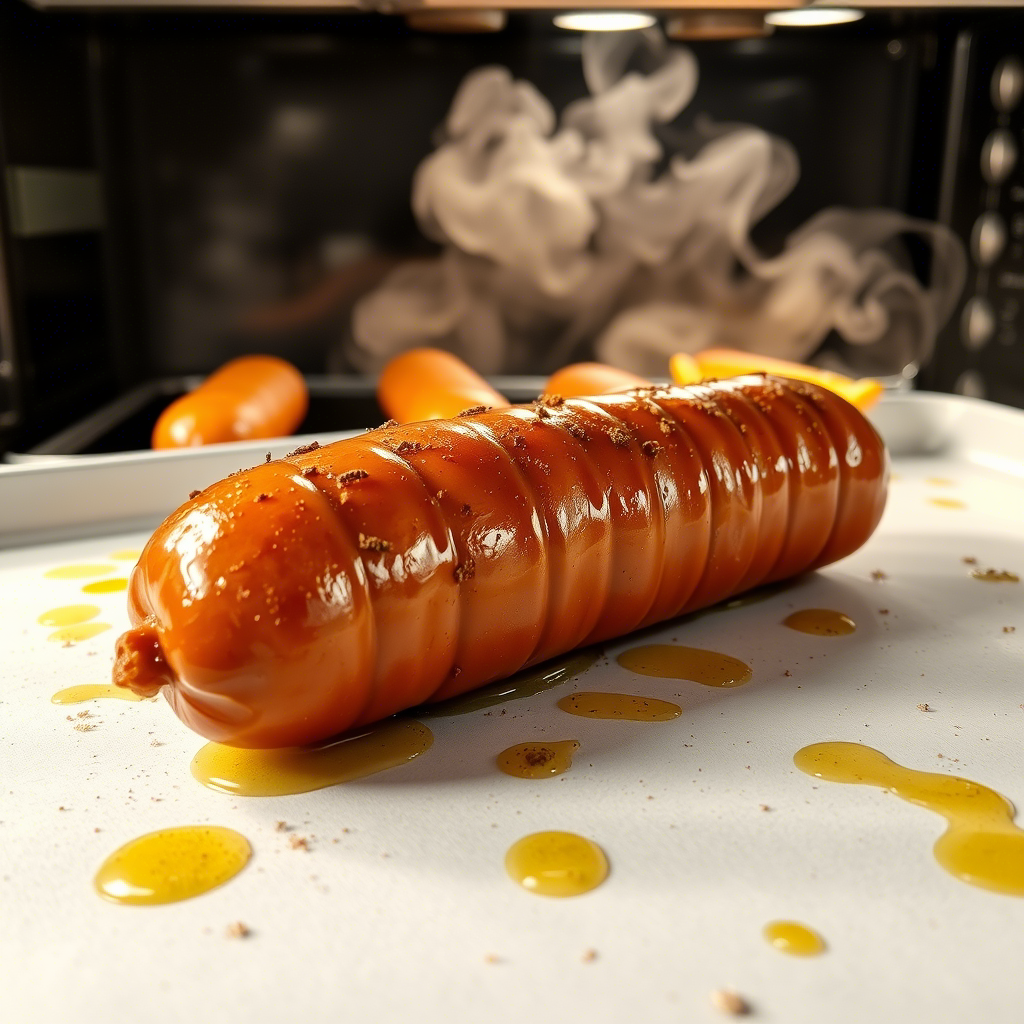How to Cook Brats on the Stove — Chef’s Method for Juicy, Flavorful Bratwursts

Bratwursts — or brats, as most of us call them — are one of those beautiful foods that don’t need much to shine. Good sausage, some heat, and a little patience.
Most people think brats need to go on the grill. But let me tell you — stove-cooked brats can be just as juicy, just as flavorful, and honestly, even more consistent if you know what you’re doing.
As a chef, stove-cooking brats gives me full control over heat, caramelization, and internal moisture. And no weather, no grill, no fuss.
Why Cooking Brats on the Stove is a Great Method
- No grill required
- Works year-round, rain or shine
- Allows gentle, even cooking
- Perfect browning and crisp casing
- Excellent flavor control
Best Pan for Cooking Brats
| Pan Type | Why It Works Well |
|---|---|
| Cast Iron Skillet | Holds heat evenly, perfect sear |
| Stainless Steel | Great browning, easy deglazing |
| Non-stick | Less traditional, but prevents sticking |
Ingredients for Stove-Cooked Brats

| Ingredient | Amount | Notes |
|---|---|---|
| Bratwursts | 4–6 sausages | Fresh or uncooked preferred |
| Beer or Broth | 1 cup | Optional, for simmering |
| Butter or Oil | 1–2 tbsp | For browning |
| Onion (optional) | 1 sliced | Adds sweetness while cooking |
| Salt & Pepper | To taste | Final seasoning |
Step-by-Step Guide: How to Cook Brats on the Stove
Step-by-Step Guide: How to Cook Brats on the Stove (My Personal Method)
Cooking bratwursts on the stove might sound simple, but doing it right takes a little finesse. After making stovetop brats dozens of times—especially during colder months when grilling isn’t an option—this is the method I personally trust every time. Here’s how to do it right:
Step 1: Choose Quality Bratwursts
Start with fresh, uncooked bratwursts, not pre-cooked ones. The flavor and texture difference is massive. Fresh brats absorb flavors better and turn out juicier. I usually go for butcher-made or German-style brats from a local deli if I can.
Tip: If you’re buying pre-packaged, look for ones with visible herbs or spices—usually a sign of better seasoning.
Step 2: Sear the Brats First
In a heavy-bottomed skillet (I use cast iron), melt 1–2 tablespoons of butter or neutral oil over medium heat. Once hot, lay in the brats—but don’t overcrowd the pan.
Sear them for 3–4 minutes per side, just until they get a golden-brown crust. You’re not cooking them through yet—just developing flavor.
Why this matters: Browning gives depth and helps lock in the juices before simmering.
Step 3: Add Onions and Braising Liquid (Optional but Amazing)
Thinly slice 1 yellow onion and tuck the rings between and around the brats. Then pour in about 1 cup of beer (my favorite: Märzen or lager) or broth if you prefer non-alcoholic.
The onions sweeten and soften, and the beer adds a malty depth.
Pro tip: Simmering in beer makes your kitchen smell like a Bavarian pub in the best way possible.
Step 4: Simmer Gently Until Cooked Through
Lower the heat to medium-low, cover the pan, and simmer the brats for 10–12 minutes. You’re aiming for an internal temperature of 71°C (160°F).
Secret weapon: I like to flip them halfway through simmering so both sides soak evenly in the beer.
Step 5: Let the Liquid Evaporate and Re-Brown
Once they’re cooked through, remove the lid and let the remaining liquid evaporate. Raise the heat slightly and brown the brats one last time to create a crisp, golden exterior.
This last browning step is what takes them from good to fantastic.
Bonus tip: Push the onions to the side and let them caramelize in the butter and brat fat while you re-brown the sausages. Insanely good.
Step 6: Final Seasoning and Serving
Season lightly with salt and pepper, then serve immediately. I like to plate them with caramelized onions on top, a dollop of German mustard on the side, and warm pretzel rolls or mashed potatoes.
My favorite combo: Stove-seared brats + grainy mustard + a cold pilsner = comfort food perfection.
Internal Temperature for Brats — Why It Matters
One of the most important things to get right when cooking bratwursts is making sure they’re fully cooked, but not overdone. Undercooked sausages can be unsafe, while overcooked ones turn dry and tough. That’s why I always recommend using a meat thermometer, even if you’re new to cooking.
Here are the safe internal temperatures for each type of bratwurst:
| Brat Type | Safe Internal Temperature |
|---|---|
| Pork Bratwurst | 160°F (71°C) |
| Beef Bratwurst | 160°F (71°C) |
| Chicken/Turkey Brat | 165°F (74°C) |
To check, insert a digital thermometer into the thickest part of the brat. Avoid touching the pan or going too close to the edge. If you’re not sure, let them cook a little longer, but don’t forget to check every few minutes. It’s better to be safe and precise than to guess.
Tips From My Kitchen – Simple but Game-Changing Advice
After years of cooking bratwursts, these are the core tips I always pass on to beginners:
Don’t Pierce the Brats
It’s tempting to poke the sausage with a fork to “check” it or let steam out, but don’t do it. Piercing the casing lets all the flavorful juices escape, and you’ll end up with dry meat. Keep the casing intact for juicy, flavorful results.
Simmer in Beer or Broth, Not Just Water
If you have beer or broth on hand, use it. Water will cook the brats just fine, but it won’t add flavor. Beer, especially a smooth lager or dark ale, gives the brats a rich aroma and taste. Chicken broth is another great option if you don’t use alcohol.
Rest Before Serving
After cooking, take the brats off the heat and let them sit for 3 to 5 minutes. This gives the juices time to redistribute inside, which helps with tenderness and flavor. Just like with steak, resting makes a big difference.
How to Serve Stove-Cooked Brats
You can keep it simple or get creative — bratwursts are very versatile. Here are a few serving ideas I personally enjoy:
- Classic style: Serve the brat in a toasted bun with yellow mustard and sauerkraut.
- Rustic style: Slice the brats and serve them with fried potatoes and onions.
- Lighter version: Place the brat over a bed of greens and drizzle with mustard vinaigrette.
- German-style: Pair with soft pretzels, pickles, and a side of whole-grain mustard.
No matter how you serve them, just make sure the brat is the star of the plate.
Storing and Reheating Cooked Brats
If you’ve cooked too many brats — don’t worry. They store and reheat well when done properly. Here’s how to keep them fresh:
| Storage Method | How Long It Lasts | Notes |
|---|---|---|
| Refrigerator | Up to 4 days | Store in a sealed container or wrap |
| Freezer | Up to 2 months | Wrap each brat separately for best results |
How to Reheat Brats
There are a few ways to reheat your leftover bratwursts:
- In a pan: Heat them slowly in a skillet with a splash of water. This keeps them juicy.
- In the oven: Preheat to 300°F (150°C) and heat the brats for 10 to 15 minutes.
- In the microwave: Heat for 30 to 60 seconds. It works, but it may soften the casing and affect the texture.
Avoid high heat — it can dry out the meat quickly. Gentle reheating works best.
Frequently Asked Questions (FAQ)
How do I know if the brats are fully cooked?
Use a meat thermometer. Pork and beef brats should reach 160°F (71°C), and chicken or turkey brats need 165°F (74°C). You can’t always tell by the color or feel, so a thermometer is your best tool.
Do I have to simmer them in beer?
No, but it helps. Simmering brats in beer or broth adds flavor and keeps them moist. If you don’t have either, water is okay — just be sure to season well.
Can I skip the simmering and just pan-fry?
You can, but they might cook unevenly or dry out. Simmering gently after browning ensures the inside cooks through without burning the outside.
How long should I simmer them?
Usually 10 to 12 minutes is enough. If you’re not sure, check the temperature or slice one open gently to see if it’s cooked through.
What kind of beer should I use?
A smooth lager or amber ale works great. Avoid anything too bitter or strong, like IPAs, unless you want a bold flavor.
Can I freeze leftover brats?
Yes. Just wrap them tightly and label the bag with the date. When reheating, thaw them overnight in the fridge for best results.